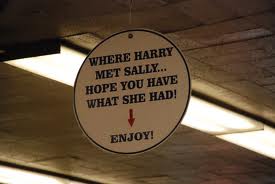Expected. You have obviously heard of this film, based on the young adult novel written by John Green, unless you’ve been living in Siberia, or not typically around hormone raging teenage girls. If you fit into either of these categories, the overall plot is about teenagers Hazel Lancaster and Augustus Waters. Set in Indiana, the audience witnesses the budding love story between the star-crossed lovers, who just happen to have a “touch of cancer”.
I’m hopeful I didn’t give too much away; however, watch the trailer and you’ve got the story basically down.
Now, for you John Green enthusiasts out there ready to verbally ambush me with clever counterarguments for calling The Fault in Our Stars an expected teenage feel good, I too have read the book before the watching the movie. And in both the book and movie’s case, I am not saying they were necessarily bad. I’m saying, for the sixteen- year-old girl in all of us this film was something we needed to bring out our emotions. Or how most of the film’s target audience would express, “all the feels”. Not that this is a bad thing either; I too was hypnotized by Augustus Water’s relaxing charm and forwardness. So to end this lengthy disclaimer: I wasn’t impressed but have respect for the film despite failing to understand the hype due to cinematic elements as well as overall story.
 One cinematography choice that continued to distract me at parts was Hazel and Augustus’ texting communication appearing on screen. In either curly cursive or chicken starch, the flirtatious conversation bubbled on screen to the ringing of a cell phone. While I understood the importance of their ways of communicating, I felt this use of text was a visual aspect that added a “junior high-ish” feel to the overall film. Visually, text aside, the film looked like you walked into the pages of the book.
One cinematography choice that continued to distract me at parts was Hazel and Augustus’ texting communication appearing on screen. In either curly cursive or chicken starch, the flirtatious conversation bubbled on screen to the ringing of a cell phone. While I understood the importance of their ways of communicating, I felt this use of text was a visual aspect that added a “junior high-ish” feel to the overall film. Visually, text aside, the film looked like you walked into the pages of the book.
Along with all the press strictly belonging to the large fandom tweeting about the film’s release and high expectations, I came into to the film expecting to cry. There weren’t parts of the film that I didn’t see coming in regards to plot that caused me to cry. Instead, the simple fact we, as an audience, cry is because we are watching a movie centered on teenage love caught in the problem of time and disease. The lengthy soliloquys Waters proclaims and the bittersweet truths Lancaster indulges the audience with pull at the heartstrings exactly how something of similar content would be pinned to a girl’s Pinterest board titled “Quotes” and laced with smiley faces and hearts.
On the acting front, none of the actors seemed irritatingly wrong for their parts. I’m not the biggest Shailene Woodley fan in general, but her interpretation of Hazel neither annoyed nor impressed me deeply. Nat Wolff, who plays Isaac continues to interest me. I would not be surprised to see him continue into more mainstream film after this. If you too were intrigued by Wolff’s performance, check out the movie Stuck in Love, available on Netflix. Of course, we cannot forget Ansel Elgort. The suave young Marlon Brando type who, until now was not exactly on Hollywood’s radar as an up-and-comer. Obviously, this is changing. I do not want to wrongly blow this out of proportion, but his performance was heartwarmingly identical to the book version Augustus Waters.
If you’re looking for a film that may not stretch your critical thinking but gives you ooey gooey feelings, this movie is one that will help you achieve that. A word of warning to those that haven’t been following the book to movie transformation: the film is cute and leaves you feeling hopeful for love, not matter how long; however, definitely not worth the earth-moving hype it has so far received.
So, I know there are those that disagree with me so share your thoughts! Or if you had the same reaction feel free to comment below as well!
































